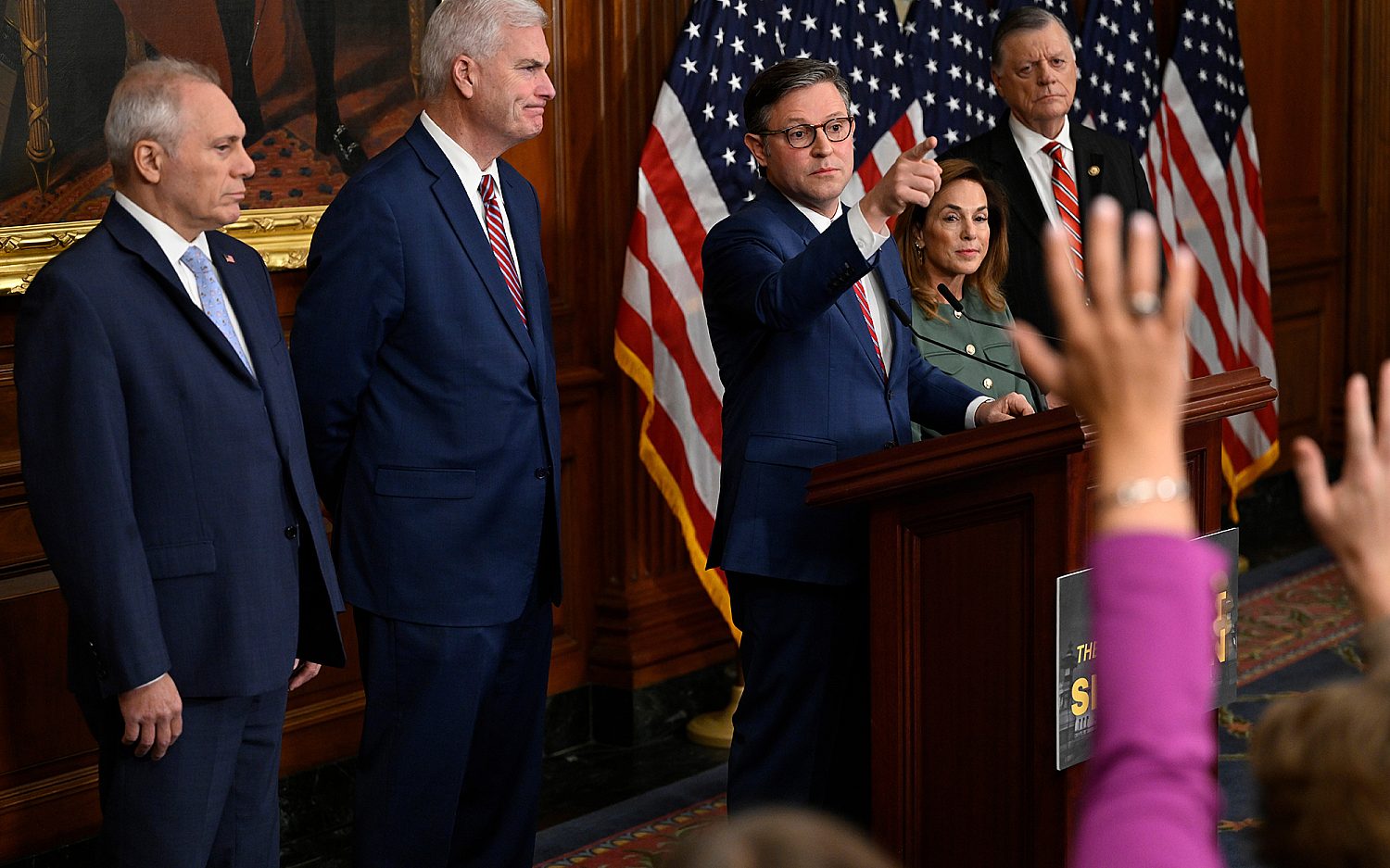Five things to know about federal budgeting
Dividing up the government purse could take all year, despite Republican control of Congress and the White House
WASHINGTON—Although one party controls the legislative and executive branches of government for the first time since 2010, big fiscal questions have only proliferated in the early days of the Trump administration.
President Donald Trump has outlined an ambitious agenda calling for, among other things, increased military spending, a wall on the U.S.-Mexico border, tax reform, and a $1 trillion infrastructure program. Those plans, plus a contentious effort to repeal and replace Obamacare, are complicating an already complex budget process likely to consume Washington for much of 2017.
Here are five key points to help explain how the budget puzzle fits together.
1. The White House budget is only a request.
On Feb. 27, the White House unveiled plans to slash some domestic programs in order to boost military spending by $54 billion without touching entitlements—the prime driver of budget deficits but an area Trump vowed not to reform during his presidential campaign.
“Above all else, we will keep our promises to the American people,” Trump said last week during an address to a joint session of Congress.
The White House has directed federal agencies to find ways to cut an average of some 10 percent from their budgets—and more in some cases. The Environmental Protection Agency faces a 24 percent budget reduction, including 20 percent of its workforce.
While Democrats decried the domestic cuts, defense hawks complained the $54 billion military increase is inadequate to properly rebuild the armed forces. Others expressed alarm that the boost excluded the U.S. Coast Guard, which reportedly faces a 14 percent budget cut, despite its national security, maritime border security, and counter-narcotics mandate.
“It would have an effect on core operations,” said retired Vice Adm. William Dean Lee, the U.S. Coast Guard’s Atlantic Area Commander until 2016. Lee noted the early stage of budget negotiations but called the opening salvo disconcerting: “The longer you go without a terrorist incident on the 9/11 scale, the more naively optimistic people tend to be. When you let your guard down, that’s when you make yourself most vulnerable.”
The full White House budget, released by the Office of Management and Budget, won’t be out until later this month, but many Republicans have already expressed a willingness to depart from it when necessary. Rep. Diane Black, R-Tenn., chairman of the House Budget Committee, told me she is optimistic her panel will pass a 2018 budget resolution that reflects congressional priorities.
“It is our responsibility in the House to do our own budget,” Black said. “He’ll have his priorities, and we’ll have our priorities, and I think we’ll be able to work together.”
2. Budget resolutions are non-binding.
House and Senate Budget committee plans offer a clearer picture of congressional spending plans, but it ultimately falls to the appropriating committees to allocate discretionary funds. (Mandatory spending, including entitlements and debt interest, continues automatically and requires statutory action to change.)
Each year Congress is supposed to pass 12 appropriations bills between May 15 and Oct. 1 (the start of the fiscal year) to fund the government. That hasn’t happened on time since 1996—and only four times in the last four decades.
3. Budget resolutions trigger reconciliation.
Although non-binding, budget resolutions are important because they trigger reconciliation—a maneuver that requires only simple majority votes for final passage. Democrats used reconciliation to implement significant budgetary provisions of Obamacare seven years ago, and now Republicans are using it to undo some budgetary pillars of the law.
Obamacare repeal has remained a central tenant of Republican campaigns for the last four major election cycles, but that’s not the only reason the GOP has put it at the top of the party’s agenda. Lawmakers are using budget reconciliation for fiscal year 2017 as the vehicle for repeal—giving it a finite amount of time to complete the process.
Fiscal 2017 reaches the halfway point at the end of March, when House Speaker Paul Ryan, R-Wis., has set a deadline for a reconciliation vote. Committees will hold markups on the legislation beginning today, even as some conservative groups and lawmakers mobilize against it.
4. Republicans want to use reconciliation to pass tax reform.
Congress last passed major tax reform in 1986 and has debated doing so again for years. While it’s still a huge political lift, it appears more likely now that Republicans control Congress and the White House and have expressed a willingness to use budget reconciliation again.
The House and Senate budget committees will introduce their fiscal 2018 budget plans in the coming weeks. Once lawmakers pass those, the two chambers can begin the reconciliation process that could produce tax reform.
Treasury Secretary Steven Mnuchin predicted “significant tax reform,” including corporate and middle-class tax cuts, could happen by August, but most observers believe it would be a major achievement if Congress can get it done by the end of the year.
Rep. Dave Brat, R-Va., a member of the House Freedom Caucus, told me tax reform is the key to creating budgetary space for Trump’s domestic agenda: “If you can get 4 percent GDP growth, then that will cover a lot of the budget problems in the short run. It won’t address the mandatory problems that are just staggering in size, but it will help in the year-to-year budget process.”
5. Other fiscal fights are looming.
The federal government is scheduled to reach the debt ceiling on March 15. Democrats say they want a “clean” increase in the debt limit, but House conservatives typically demand some form of spending cuts in exchange for backing a debt limit increase.
Another pressing issue: Lawmakers passed in December a stop-gap spending measure to fund the government through April 28. That makes a government shutdown possible as early as next month—a threat Democrats are already using as leverage. This week Sen. Chris Coons, D-Del., called a potential shutdown the “only card” Democrats have in negotiations with Republicans.
An actual newsletter worth subscribing to instead of just a collection of links. —Adam
Sign up to receive The Sift email newsletter each weekday morning for the latest headlines from WORLD’s breaking news team.





Please wait while we load the latest comments...
Comments
Please register, subscribe, or log in to comment on this article.